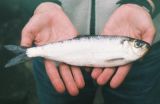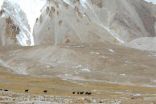(Press-News.org) Charles Dickens' tales are filled with immortal characters — think of A Christmas Carol's Scrooge and Great Expectations' Miss Havisham. But more than whims of literary invention, his characters and plots often deal with the difficult social realities of Victorian England. His portrayal of the disabled — both in terms of medicine and the social discrimination they faced — is no exception.
"Social attitudes towards the disabled can often be traced through art, from ancient times through today," explains Prof. Avi Ohry of Tel Aviv University's Sackler Faculty of Medicine, a specialist in rehabilitation medicine and a scholar of the medical humanities. In Dickens' works, he says, readers are confronted with the stark realities of the 19th century, including poor medical care and social discrimination against the physically disabled and the mentally ill.
In a recent article for the journal Orthopedia, Traumatologia and Rehabilitacja, Prof. Ohry argues that literature was a way for Dickens to express his ideas for reform and advocate for better treatment of the disabled. Extremely influential, Dickens' opinions may have gone a long way towards influencing social attitudes — the first step towards improved care and non-discriminatory legislation, he says.
Putting disability in a new light
During Dickens' time, disabled people were still commonly feared and seen as monstrous, explains Prof. Ohry. In the literature of the 19th century, physical deformities were often interpreted as "outward manifestations of inner depravity" or "punishment for moral failings," he says.
And while Dickens does portray some of his disabled characters in this way, such as the greedy and ruthless Smallweed in Bleak House, many of his disabled characters are uniquely sympathetic and inspirational — a surprisingly progressive attitude, considering the era's social prejudices towards the disabled. Examples include the heart-tugging Tiny Tim from A Christmas Carol and Phil Squod, a loyal and good-hearted servant in Bleak House, both of whom are "crippled." Dickens also took care to differentiate between physical handicaps and mental disabilities or illness, another distinguishing feature of his work.
This kind of advanced thinking was shaped by Dickens' real life experiences, Prof. Ohry explains. The author's own experience of illness and poverty, especially in early adulthood, bred a lifelong interest in medical and social conditions. Deeply committed to alleviating the plight of the poor and a frequent visitor at both hospitals and asylums, Dickens maintained close friendships with some of the most notable reformers and doctors of his time.
Learning from the past
Although attitudes towards the disabled have shifted throughout the centuries, there are still lessons to be learned from Dickens' message. Today's sociologists and anthropologists who have studied reactions to disabled communities can attest that prejudice remains common, says Prof. Ohry. Ask a healthy individual to sit in a disabled person's wheelchair, for instance, and often he will refuse, as though the disability is contagious, he adds.
In many arenas, advocates for the sick and infirm are still fighting the battle for greater acceptance of those who are different. Dickens' passion for social reform and support for those in need resonates even in our modern society, he concludes.
###
American Friends of Tel Aviv University supports Israel's leading, most comprehensive and most sought-after center of higher learning. Independently ranked 94th among the world's top universities for the impact of its research, TAU's innovations and discoveries are cited more often by the global scientific community than all but 10 other universities.
Internationally recognized for the scope and groundbreaking nature of its research and scholarship, Tel Aviv University consistently produces work with profound implications for the future. END
Scientists at the Academy of Finland's Centre of Excellence in Computational Inference Research have developed novel computational methods that have yielded essential knowledge of how hospital-acquired bacteria spread and develop. These new methods, based on randomised algorithms, make it possible to analyse extensive genomic data significantly faster and more efficiently than previously. By applying these results, it is possible to better follow hospital-acquired infections in the future, or even fight them in real time.
The new methods are used to develop models of ...
AMHERST, Mass. – Despite modern designs intended to allow migratory fish to pass, hydropower dams on major Northeast U.S. waterways, including the Merrimack and Connecticut rivers, have failed to let economically important species such as salmon, shad and river herring reach their spawning grounds, say a team of economists and fish ecologists including Adrian Jordaan of the University of Massachusetts Amherst.
This raises serious questions about the impact of new dams now being planned and constructed on major waterways worldwide, say the researchers in the current ...
MANHATTAN, Kan. -- A Kansas State University researcher is developing more efficient ways to save costs, time and energy when creating nanomaterials and lithium-ion batteries.
Gurpreet Singh, assistant professor of mechanical and nuclear engineering, and his research team have published two recent articles on newer, cheaper and faster methods for creating nanomaterials that can be used for lithium-ion batteries. In the past year, Singh has published eight articles -- five of which involve lithium-ion battery research.
"We are exploring new methods for quick and cost-effective ...
Obese and overweight people are gaining weight rapidly in low-and middle-income countries while those who are severely undernourished are not experiencing similar weight gains, according to a University of Toronto and Harvard School of Public Health study.
This growing divide may force governments in the developing world to care for people who fall dramatically short on their calorie intake while simultaneously treating health problems associated with obesity, including diabetes and heart disease.
"One might think that as a country grows economically, the majority of ...
CAMBRIGDE, MA -- Epileptic seizures occur when neurons in the brain become excessively active. However, a new study from MIT neuroscientists suggests that some seizures may originate in non-neuronal cells known as glia, which were long believed to play a mere supporting role in brain function.
In a study of fruit flies, the researchers identified a glial-cell mutation that makes the flies much more prone to epileptic seizures. Mutations in the gene, which influences glial cells' communication with neurons, appear to make neurons much more excitable. That excitability ...
Radiocarbon dates of tiny fossilised marine animals found in Antarctica's seabed sediments offer new clues about the recent rapid ice loss from the West Antarctic Ice Sheet and help scientists make better predictions about future sea-level rise. This region of the icy continent is thought to be vulnerable to regional climate warming and changes in ocean circulation.
Reporting this month in the journal Geology a team of researchers from British Antarctic Survey (BAS), the Alfred Wegener Institute for Polar and Marine Research (AWI) and the University of Tromsø presents ...
NEW YORK (January 16, 2013) — A team of American and Chinese conservationists from the Wildlife Conservation Society and University of Montana recently counted nearly 1,000 wild yaks from a remote area of the Tibetan-Qinghai Plateau. The finding may indicate a comeback for this species, which was decimated by overhunting in the mid 20th century.
The team counted 990 yaks in a rugged area called Hoh Xil – a national nature reserve nearly the size of West Virginia but devoid of people. The remote region lies in the mid-eastern Tibetan-Himalayan highlands, home to some ...
High-performance infrared cameras are crucial for civilian and military applications such as night-vision goggles and search-and-rescue operations. Existing cameras usually fall into one of two types: active cameras, which use an invisible infrared source to illuminate the scene, usually in the near or short-wavelength infrared; and passive cameras, which detect the thermal radiation given off by a warm object, typically in the mid- or long-wavelength infrared, without the need for any illumination. Both camera types have advantages and disadvantages in the field.
Integrating ...
For the last ten years, theoretical physicists have shown that the intense connections generated between particles as established in the quantum law of 'entanglement' may hold the key to eventual teleportation of quantum information.
Now, for the first time, researchers have worked out how entanglement could be 'recycled' to increase the efficiency of these connections. Published in the journal Physical Review Letters, the result could conceivably take us a step closer to sci-fi style teleportation in the future, although this research is purely theoretical in nature. ...
In an advance toward stain-proof, spill-proof clothing, protective garments and other products that shrug off virtually every liquid — from blood and ketchup to concentrated acids — scientists are reporting development of new "superomniphobic" surfaces. Their report on surfaces that display extreme repellency to two families of liquids — Newtonian and non-Newtonian liquids — appears in the Journal of the American Chemical Society.
Anish Tuteja and colleagues point out that scientists have previously reported "omniphobic" surfaces, the term meaning that such surfaces can ...

